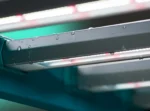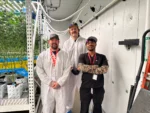In cannabis cultivation, time isn’t just money; time is yield.
Every delay, every equipment failure, and every scrambled install comes at a cost. And in a margin-tight market, the growers who stay ahead aren’t just running good lights. They’re running tight systems.
That’s where BIOS comes in.
More than a lighting manufacturer, BIOS acts as a deployment partner. They help growers move faster, avoid expensive missteps, and build lasting value into every square foot of canopy. From early-stage planning through post-install support, the BIOS team is obsessed with simplicity—and the long-term math of running a smarter facility.
Finding Problems Before They Become Expensive
The most common install delay BIOS encounters? Not enough power.
“Lack of available amps needed to operate the number of lights is the number one oversight we catch before installs,” says Patrick Kamphaus, Vice President of Customer Success at BIOS.
It’s a simple issue with costly consequences: delays, redesigns, surprise upgrade costs. BIOS prevents all that by getting involved early—checking power requirements, aligning HVAC expectations, and making sure every little accessory is planned before anything ships.
And those little details matter. A missing cable or unclear wiring spec can cause just as much chaos on install day as a major equipment failure. BIOS treats them the same—something to solve before the truck rolls up.
The BIOS Deployment Process: All Hands, No Surprises
This attention to detail isn’t accidental. It’s baked into BIOS’s process.
Once a grower signs a quote, BIOS kicks off a planning sync with the build team—general contractors, electricians, installers, anyone who touches the install. Together, they walk through the install plan, review diagrams, and flag any friction points before they become schedule-killers.
From there, BIOS sends detailed wiring layouts, mounting guides, and accessory checklists. Once the gear lands, they remain on call—and often on-site—to ensure the install goes smoothly and the system performs from day one.
It’s all front-loaded. That’s the point. A few hours of upfront coordination can shave days—even weeks—off your deployment timeline.
Fast Layouts Keep Projects on Track
When you’re juggling construction windows, rebate applications, and delivery schedules, time matters. BIOS understands that which is why their lighting layout turnaround is typically just 24 to 48 hours.
That speed keeps the wheels turning — and the team moving forward — even as last-minute changes or new room designs emerge.
Fixtures That Outlast the Competition
There’s durability, and then there’s BIOS.
All BIOS fixtures carry a Q90 > 50,000-hour rating. That means they’ll deliver 90% of their original light output for more than 50,000 hours—far exceeding industry standards like DLC’s 36,000-hour threshold.
The real-world result? Fewer mid-cycle failures. Fewer surprise replacements. And more consistent light output harvest after harvest.
“I’ve had customers come to us because they were tired of replacing lights mid-grow,” Patrick says. “It’s just not a risk worth taking.”
Maintenance Made Easy
Most growers don’t have time to baby their lights. BIOS knows that. So, they designed fixtures that are easy to clean and tough to damage.
Smooth heatsinks shed dust and debris. Tempered glass lenses protect LEDs from water and overzealous spray-downs.
“Ease of cleaning was a priority in BIOS’s design, Patrick says. Every extra minute maintaining fixtures adds up over a year.”
The less time your team spends on ladders with rags and sprayers, the more time they can spend on what really matters—growing.
Retrofitting with Purpose
Even before you factor in utility rebates, retrofitting from HPS or first-gen LEDs to BIOS offers big gains.
You eliminate the need for constant bulb swaps (or fire risks from exploding glass), reduce your electrical load, and dramatically boost light uniformity and quality—which in turn drives better flower development.
In fact, some customers switch not because they’re chasing savings, but because they’ve had a close call.
They weren’t thinking about efficiency, necessarily, Patrick says. They just didn’t want to risk another fire.
It’s Not About Price. It’s About Value.
It’s easy to compare fixtures by their sticker price or micromoles per joule. But savvy growers know that’s only part of the equation.
What matters is what those lights cost you—in labor, in downtime, in infrastructure strain—over the long haul.
With BIOS, that equation looks different. You get faster installs. Longer-lasting gear. Easier cleaning. Better support. And ultimately, higher operational ROI from your lighting investment.
“When we design a system,” Patrick says, “we’re thinking about install, maintenance, labor, and performance.”
Final Word: Lighting That’s Built for the Long Haul
In cultivation, everything’s connected. A missed detail in the install process can ripple through a whole grow cycle. A maintenance-heavy fixture can eat up hours that should be spent with the plants. And cheap equipment that fails mid-cycle? That’s a lost harvest.
BIOS gets that. That’s why their lights—and their team—are built to do more. From power specs to harvest strategy, they help growers move faster, spend smarter, and build facilities that actually work.


